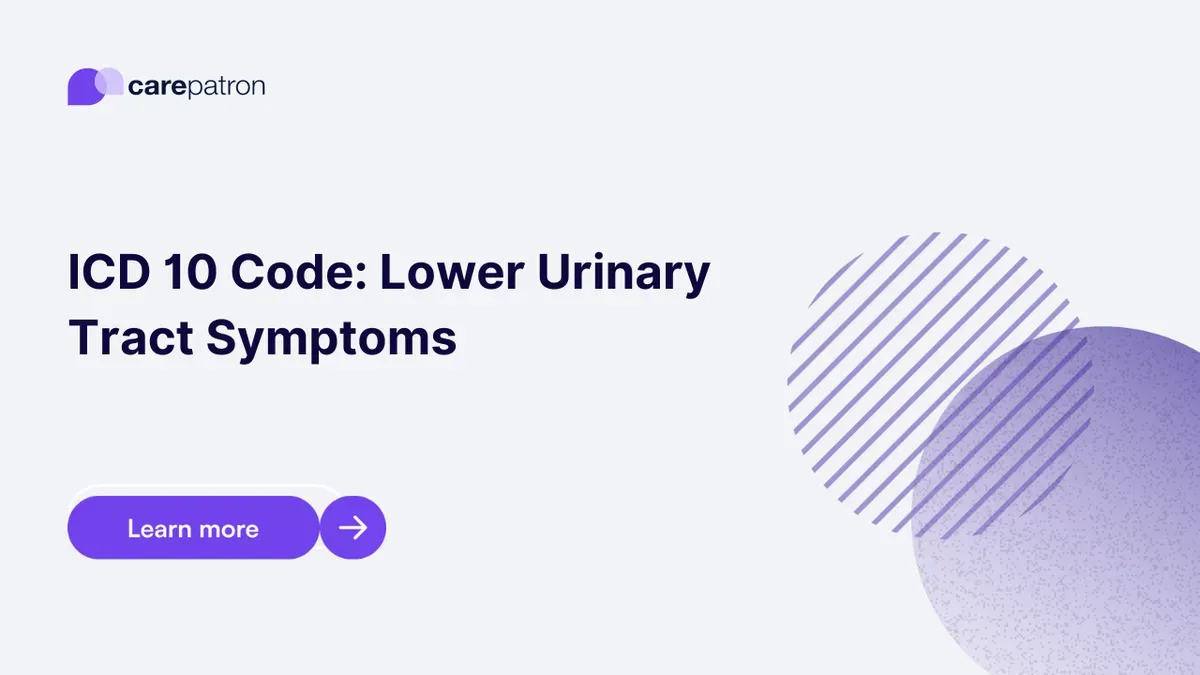
Lower Urinary Tract Symptoms ICD-10-CM Codes
Explore the 2023 Lower Urinary Tract Symptoms ICD-10-CM codes guide. Delve into the specific codes, clinical descriptions, and billing implications.
Use Code
Commonly asked questions
Common causes of LUTS include benign prostatic hyperplasia (BPH), urinary tract infections, bladder stones, overactive bladder, and neurological disorders affecting bladder function.
LUTS are diagnosed through a combination of patient history, physical examination, urine tests, a bladder diary, and sometimes imaging studies or cystoscopy to examine the bladder's interior.
Treatment options for LUTS depend on the underlying cause. They may include medications to relax the bladder or shrink the prostate, pelvic floor exercises, bladder training, and, in some cases, surgical interventions.
EHR and practice management software
Get started for free
*No credit card required
Free
$0/usd
Unlimited clients
Telehealth
1GB of storage
Client portal text
Automated billing and online payments
